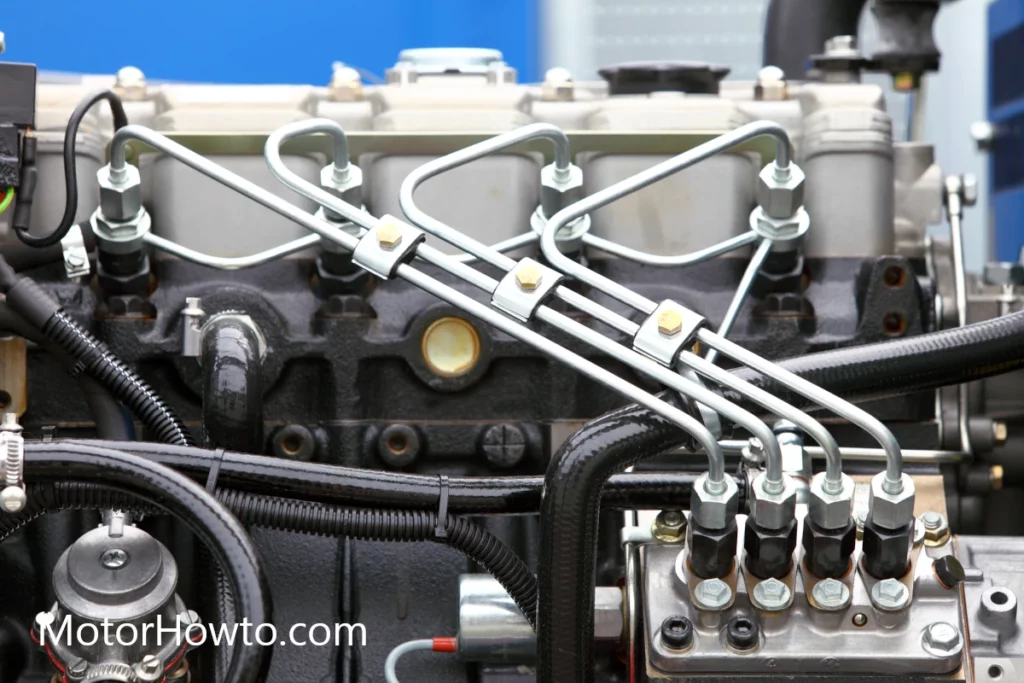Navigating the world of technology can be both exhilarating and fraught with challenges. While innovation continues at an unprecedented pace, users often face unexpected hurdles.
Among the tools that have become instrumental for many is the Hydra Tuner 7.3 for your Powerstroke Diesel Engine. Yet, as with many sophisticated tools, occasional issues may stump even the most seasoned professionals.
Hydra Tuner 7.3 for Powerstroke Diesel Engine issues include software glitches, incompatibility with certain systems, and UI concerns. Address them by updating to the latest version, ensuring system compatibility, following recommended configurations, and consulting the official documentation or community forums for specific troubleshooting tips.

In this article, we’ll delve deep into some of the common challenges faced by users of Hydra Tuner 7.3, providing insight and shedding light on potential resolutions.
Related:
- Duramax Oil Pressure (Understanding & Troubleshooting)
- LMM vs. LBZ (Comparison of Duramax Diesel Engines)
- Duramax Limp Mode Reset (Step-by-Step Guide)
Introduction to Hydra Tuner 7.3
Hydra Tuner 7.3 is a testament to the relentless pursuit of technological excellence, bridging the gap between complex computational tasks and user-friendly interfaces.
Designed to cater to a diverse range of needs, from system tuning to optimization, it’s a tool that has quickly embedded itself as an essential in many tech toolkits.
Yet, as with all innovations, its introduction was not without a learning curve. Seasoned and new users navigate its myriad features, each promising better performance and more streamlined processes.
Understanding its fundamentals is the first step toward harnessing its full potential.
Software Glitches: Causes and Symptoms
Software glitches, often regarded as bugs or anomalies, can disrupt the seamless functioning of any application, and Hydra Tuner 7.3 is no exception. These unexpected behaviors can stem from various sources, creating challenges for users who rely on the software’s smooth operation.
Causes:
- Coding Errors: The most common source of glitches. Even minor mistakes or oversights in code can lead to unpredictable outcomes
- Incompatibility: Sometimes, Hydra Tuner 7.3 might not be fully compatible with certain system configurations or other installed software, leading to hitches.
- Corrupted Files: If any files related to the software become corrupted during installation or use, it can lead to malfunctions.
- External Interferences: Third-party software or malware might interfere with the software’s operation, causing glitches.
- Outdated Components: Using outdated hardware or drivers can sometimes result in software conflicts.
Symptoms:
- Unexpected Crashes: The software might close suddenly without any warning.ž
- Functionality Breakdown: Certain features of Hydra Tuner 7.3 might stop working or not deliver the expected results.
- Slow Performance: The software might lag or respond slowly to commands.
- Graphical Anomalies: Users might notice visual distortions or irregularities in the user interface.
- Error Messages: Frequent and sometimes cryptic error prompts can indicate underlying glitches.
Recognizing these causes and symptoms is crucial for swift troubleshooting and ensuring the software delivers optimal performance.
Incompatibility Concerns: Recognizing the Signs
In the vast ecosystem of software and hardware, not every component harmoniously interacts with the other. Hydra Tuner 7.3, despite its robust design, can sometimes face incompatibility issues with certain systems or software. This misalignment can impede its performance or even prevent it from functioning altogether.
Common Sources of Incompatibility:
- Operating Systems: Not all versions or types of OS might support Hydra Tuner 7.3 optimally.
- Hardware Limitations: Specific hardware configurations, especially older components, might not meet the software’s requirements.
- Driver Conflicts: Outdated or conflicting drivers can hinder the software’s operations.
- Third-party Software: Some applications or utilities might clash with Hydra Tuner 7.3, causing operational issues.
Recognizable Signs of Incompatibility:
- Installation Failures: Incompatibility can sometimes prevent the software from installing correctly or initiating the installation process.
- Recurring Crashes: If the software crashes frequently upon startup or during specific tasks, it might be a sign of incompatibility.
- Unresponsive Features: Some functionalities of Hydra Tuner 7.3 might not work or appear grayed out.
- System Warnings: Your system might display warning messages about certain components being incompatible or requiring updates.
- Degraded Performance: The software might run at significantly reduced speed or efficiency, indicating potential compatibility issues.
Understanding these signs is the first step toward addressing incompatibility concerns. By ensuring that every component aligns well with Hydra Tuner 7.3’s requirements, users can enjoy an uninterrupted and efficient experience.
Performance Lags and Overheating Issues
Optimal performance is what every user expects from their software tools, but there are moments when Hydra Tuner 7.3 might not meet these expectations. Performance lags and overheating can be distressing, often hindering tasks and sometimes causing potential harm to the hardware.
Root Causes of Performance Lags:
- High Resource Consumption: When Hydra Tuner 7.3 uses an excessive amount of system resources, it can slow down both the software and the system.
- Background Processes: Other software or processes running in the background can compete for resources, affecting Hydra Tuner’s performance.
- Fragmented or Full Storage: A fragmented hard drive or one nearing its capacity can cause delays in data access and software operations.
- Memory Leaks occur when software doesn’t release memory back to the system after its use, reducing available RAM over time.
Factors Leading to Overheating:
- Intensive Operations: Prolonged usage or running resource-intensive tasks can generate excess heat.
- Inadequate Ventilation: If the system’s vents are blocked, or the cooling mechanism is compromised, it can’t dissipate heat effectively.
- Ambient Temperature: A warm surrounding environment can exacerbate overheating issues.
- Dusty or Dirty Components: Dust can act as an insulator, trapping heat within the system.
Symptoms to Look Out For:
- Stuttering Performance: If Hydra Tuner 7.3 hesitates or pauses during operations, it’s a clear indication of performance lags.
- System Freezes: The system might become unresponsive for short periods.
- Audible Fan Noise: A constantly running or unusually loud fan suggests the system is trying to cool down.
- System Shutdowns: In extreme cases, a computer might shut down to protect itself due to excessive heat.
- Warm-to-Touch Surfaces: If the laptop or PC’s surfaces become hot, it directly shows overheating.
Addressing these concerns promptly can prevent long-term damage to the system and ensure that Hydra Tuner 7.3 runs as intended. Regular maintenance and monitoring are vital to safeguard both software and hardware health.
Troubleshooting Common Errors
Regardless of complexity or sophistication, every software can present users with errors. With Hydra Tuner 7.3, while these occurrences might be infrequent, they’re not entirely elusive. Recognizing and efficiently addressing these errors can drastically reduce downtime and enhance user experience.
Common Errors and Their Possible Solutions:
- Startup Failures:
- Potential Causes: Corrupted files, software conflicts, or inadequate permissions.
- Troubleshooting Steps: Reinstall Hydra Tuner, ensure no conflicting software is running, and check if the software has the required permissions.
- Feature Malfunctions:
- Potential Causes: Bugs, outdated software, or incorrect settings.
- Troubleshooting Steps: Update to the latest version of Hydra Tuner 7.3, reset settings to default, or consult the user manual for correct configurations.
- Unexpected Shutdowns:
- Potential Causes: Memory overload, incompatible plugins, or system instability.
- Troubleshooting Steps: Monitor the system’s memory usage, disable recently added plugins, or ensure the system meets the minimum requirements for Hydra Tuner.
- Error Messages During Operations:
- Potential Causes: Temporary software glitches, incorrect file formats, or unsupported operations.
- Troubleshooting Steps: Restart the software, ensure all inputs and files are in the correct format, and verify the operation’s compatibility with the software version.
- Integration Issues with Other Software:
- Potential Causes: Software conflicts, different versions, or missing dependencies.
- Troubleshooting Steps: Update all interacting software to their latest versions, ensure no conflicting software runs simultaneously, and check for any missing software dependencies.
Proactive Measures to Prevent Errors:
- Keep Hydra Tuner 7.3 updated to the latest version.
- Regularly back up settings and configurations.
- Monitor system health and resources.
- Avoid running too many applications simultaneously.
- Consult official forums and community boards for emerging issues and their solutions.
By systematically troubleshooting errors, users can minimize disruptions and make the most of Hydra Tuner 7.3 has capabilities.
Keeping Hydra Tuner Updated: The Importance
Software obsolescence is an undeniable reality in the rapidly evolving world of technology. Software must adapt as systems evolve and user needs change to maintain relevance and functionality. Hydra Tuner 7.3, despite its advanced features and capabilities, is no exception. Ensuring that it’s kept updated is more than just a routine task; it’s a necessity that carries several critical advantages.
- Enhanced Security:
- Updates often include patches for vulnerabilities discovered since the last version. By keeping Hydra Tuner 7.3 updated, users protect themselves from potential security threats and breaches.
- Bug Fixes:
- No software is immune to glitches or bugs. Regular updates rectify any issues or inconsistencies identified in previous versions, ensuring smoother operation.
- New Features and Improvements:
- Software updates often introduce new functionalities or enhancements to existing features. This ensures users can always access the software’s best tools and utilities.
- Optimized Performance:
- As developers gain more insights from user feedback, they tweak the software to run more efficiently, ensuring faster response times and reduced resource consumption.
- Compatibility:
- As operating systems and other software receive updates, compatibility issues might arise with older software versions. Regular updates ensure that Hydra Tuner 7.3 remains compatible with the latest systems and software.
- User Experience:
- An updated software often provides a better user experience through improved interface, more intuitive features, or reduced errors.
- Long-Term Savings:
- While updating might seem like a recurring task, it can prevent larger issues in the future that might require more significant time and financial investments to resolve.
- Staying Informed:
- Updates often come with release notes or documentation that informs users about the changes, helping them make the most of the software’s capabilities.
- Community and Support:
- Updated versions usually have a more active community and better support since developers and the broader user base focus on the latest iteration.
In summary, keeping Hydra Tuner 7.3 updated is an essential practice that ensures security, optimizes performance, and provides users with a continuously evolving tool tailored to meet the demands of modern technology. Regular updates invest in reliability, efficiency, and the software’s longevity.
Sources
Hydra Tuner owners – What problems have you had?
9 Common Problems With 7.3 Power Stroke Diesel Engines, And How You Can Fix Them



